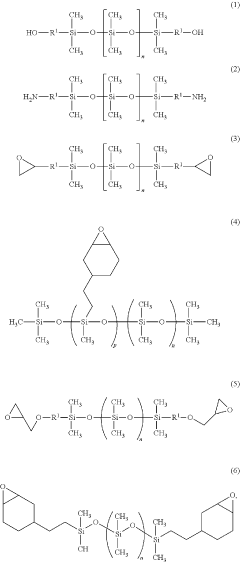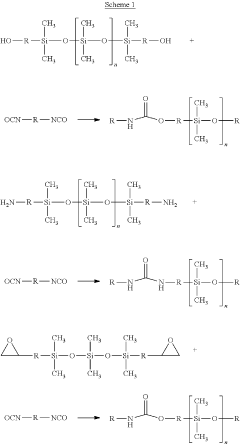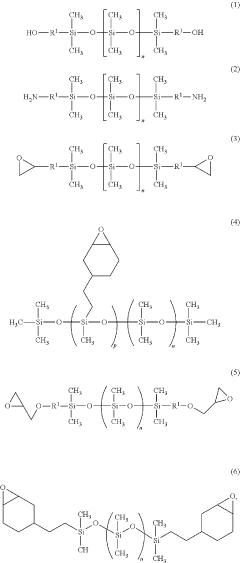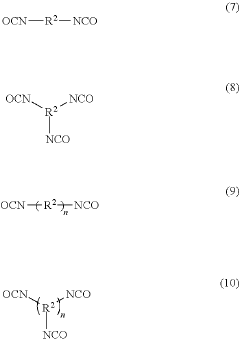Research on the development and application of aerogel-based insulation materials - Eureka
OCT 8, 20244 MIN READ
Generate Your Technical Report in Patsnap Eureka
AI-Powered Innovation Solution Platform for R&D
Aerogel Insulation Technology Background and Goals
The primary objective is to provide a comprehensive overview of the development history and technological evolution trends in the field of aerogel-based insulation materials. This section will delve into the key milestones and breakthroughs that have shaped the progress of this technology, shedding light on the driving forces behind its advancements. Additionally, it will clearly outline the anticipated technological goals and desired outcomes that researchers and industry players aim to achieve through the continued exploration and refinement of aerogel-based insulation materials.
By establishing a solid understanding of the technology's background and objectives, this section lays the foundation for the subsequent analysis and discussions presented in the report. It serves as a crucial starting point, contextualizing the current state of the art and setting the stage for exploring the market demands, technological challenges, and potential innovative directions within this domain.
By establishing a solid understanding of the technology's background and objectives, this section lays the foundation for the subsequent analysis and discussions presented in the report. It serves as a crucial starting point, contextualizing the current state of the art and setting the stage for exploring the market demands, technological challenges, and potential innovative directions within this domain.
Market Demand for Aerogel Insulation Materials
- Growing Demand
Aerogel insulation materials have witnessed a surge in demand due to their exceptional thermal insulation properties, driven by the need for energy-efficient buildings and industrial processes. - Construction Industry
The construction sector is a major consumer, utilizing aerogel insulation in walls, roofs, and piping systems to reduce energy consumption and meet stringent building codes. - Industrial Applications
Aerogel insulation finds applications in various industries, such as oil and gas, petrochemicals, and refrigeration, where maintaining temperature control is crucial for operational efficiency and safety. - Emerging Markets
Emerging markets, particularly in Asia and the Middle East, are experiencing rapid urbanization and industrialization, fueling the demand for advanced insulation solutions like aerogels. - Sustainability Trends
The growing emphasis on sustainability and reducing carbon footprints has driven the adoption of aerogel insulation materials, as they contribute to energy conservation and environmental protection.
Current State and Challenges of Aerogel Insulation
- Current Limitations Aerogel insulation materials face several challenges, including high production costs, brittleness, and poor moisture resistance.
- Manufacturing Challenges The manufacturing process for aerogels is complex and energy-intensive, contributing to high costs and limiting large-scale production.
- Mechanical Properties Aerogels are highly porous and fragile, making them susceptible to damage during handling and installation, limiting their applications.
- Moisture Resistance Aerogels are hydrophilic, meaning they can absorb moisture from the air, reducing their insulation performance over time.
- Geographic Distribution Aerogel production is currently concentrated in a few regions, with limited availability and high transportation costs in other areas.
Evolution of Aerogel Insulation Technologies

Existing Aerogel Insulation Solutions
01 Aerogel Composite Insulation
Aerogel composites combine aerogels with fibers, foams, or polymers to enhance insulation properties, mechanical strength, and other characteristics for specific applications.- Aerogel Composite Materials: Aerogel composites combine aerogels with fibers, foams, or polymers for enhanced thermal insulation, mechanical properties, and other characteristics.
- Aerogel Preparation Methods: Various synthesis techniques and precursors/additives are used to produce aerogel insulation materials with high thermal performance, strength, fire resistance, or radiation shielding.
- Aerogel Insulation Coatings and Films: Lightweight and flexible aerogel-based coatings and films provide effective thermal insulation for building envelopes, electrical boxes, and other surfaces.
- Aerogel Insulation Testing: Devices and methods measure thermal conductivity, heat transfer, and other properties of aerogel materials, coatings, or composites under different conditions.
- Building Insulation Applications: Aerogel-based insulation materials in panels, boards, or modular units are developed for insulating walls, roofs, and windows in buildings.
02 Aerogel Insulation Preparation
Various synthesis techniques, drying processes, and additives/reinforcements are used to produce aerogel insulation materials with high thermal resistance, low density, and improved strength.03 Enhanced Aerogel Insulation Properties
Aerogel insulation materials with improved compression strength, tensile strength, flame retardancy, or radiation shielding are developed through specific materials, additives, or processing.04 Aerogel Insulation Performance Testing
Devices and methods measure thermal conductivity, heat transfer, and other parameters of aerogel materials or composites under different conditions or environments.05 Aerogel Insulation Applications
Aerogel insulation materials are utilized in panels, coatings, or other forms for building insulation, electrical equipment insulation, and insulation in high-temperature or cryogenic environments.
Key Players in Aerogel Insulation Industry
The aerogel-based insulation materials market is growing, driven by energy efficiency needs. Key players like Aspen Aerogels, Cabot Corp., and LG Chem offer advanced products, while research institutions contribute to technological advancements. Companies like Henkel and BASF leverage R&D capabilities to enhance material properties and application methods.
Aspen Aerogels, Inc.
Technical Solution: Aspen Aerogels specializes in aerogel-based insulation materials like Pyrogel, offering superior thermal performance, flexibility, and durability for various industries.
Strength: High thermal performance and durability. Weakness: Higher cost.
Henkel IP & Holding GmbH
Technical Solution:
Core Innovations in Aerogel Insulation
Polysiloxane based aerogels
PatentInactiveUS20190276630A1
Innovation
- The use of a functionalized poly(dimethylsiloxane) oligomer and an aliphatic or aromatic isocyanate compound, which are then reacted in the presence of a catalyst and a solvent to form the aerogel. the resulting aerogel exhibits low thermal conductivity and improved mechanical properties compared to existing inorganic aerogels. the invention also encompasses a process for preparing the aerogel, which includes dissolving the poly(dimethylsiloxane) oligomer and the isocyanate compound into a solvent, mixing them, adding a catalyst, allowing the mixture to stand to form a gel, washing the gel with a solvent, and drying it using supercritical or ambient drying.
Environmental Impact of Aerogel Production
Aerogel-based insulation materials have emerged as a promising solution for energy-efficient buildings and industrial applications. These lightweight, porous materials exhibit exceptional thermal insulation properties due to their low density and high porosity. The development of aerogel insulation materials has been driven by the need for sustainable and high-performance thermal management solutions. Key advancements include improving mechanical strength, reducing production costs, and exploring new composite materials. Potential applications span from building envelopes to cryogenic systems and aerospace industries, offering significant energy savings and environmental benefits. Ongoing research focuses on optimizing material properties, scalable manufacturing processes, and integrating aerogels into innovative insulation systems.
the structure of the environmentally friendly knitted fabric provided by the present invention; figure 2 Flow chart of the yarn wrapping machine for environmentally friendly knitted fabrics and storage devices; image 3 Is the parameter map of the yarn covering machine
Login to View More Regulatory Standards for Insulation Materials
Aerogel-based insulation materials have emerged as a promising solution for energy-efficient buildings and industrial applications. These lightweight, porous materials exhibit exceptional thermal insulation properties due to their low density and high porosity. The development of aerogel insulation materials has been driven by the need for sustainable and high-performance thermal management solutions. Key advancements include improving mechanical strength, reducing production costs, and exploring novel aerogel compositions. Potential applications span from building envelopes to cryogenic systems and aerospace components. Ongoing research focuses on enhancing material properties, scalable manufacturing processes, and integrating aerogels into composite materials for multifunctional applications.
the structure of the environmentally friendly knitted fabric provided by the present invention; figure 2 Flow chart of the yarn wrapping machine for environmentally friendly knitted fabrics and storage devices; image 3 Is the parameter map of the yarn covering machine
Login to View More If you want an in-depth research or a technical report, you can always get what you want in Patsnap Eureka TechResearch . Try now!



